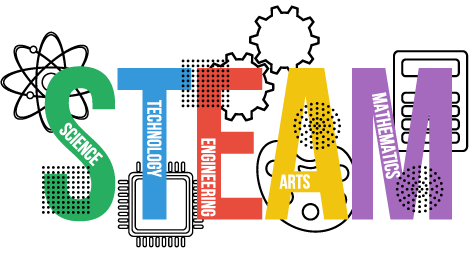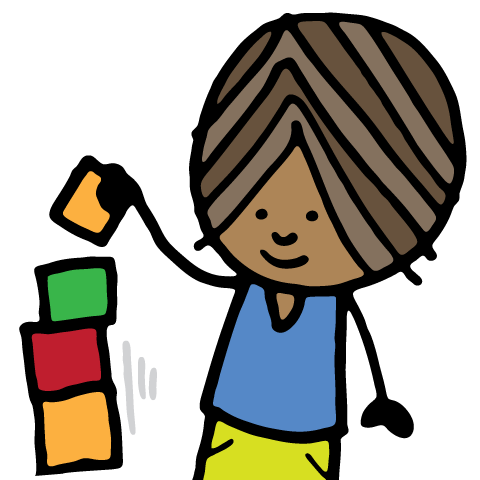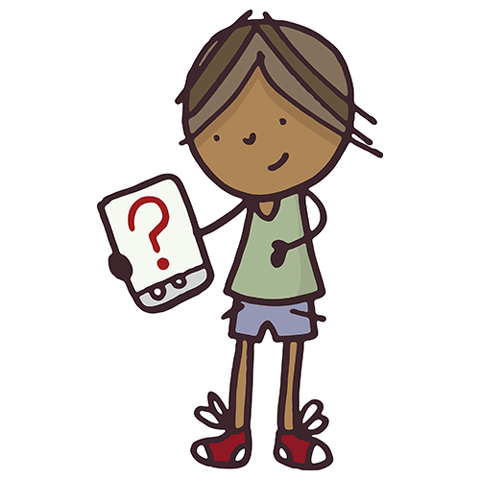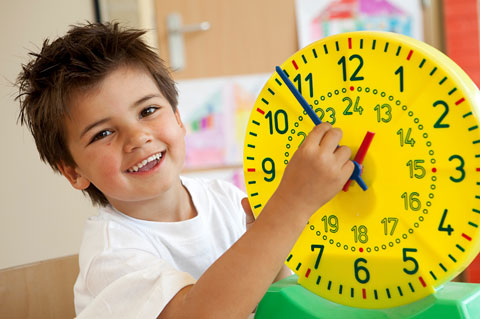
STEAM (science, technology, engineering, arts, and mathematics) learning activities provide opportunists for young children to develop skills across developmental domains. This tool kit provides ideas and resources to help you plan engaging and developmentally appropriate STEAM activities for young children. Begin with the “Getting Started” tab to find out how children learn about their world through STEAM experiences. Then, click on the tab for each individual component of STEAM learning for more ideas.
Getting Started
STEAM learning provides children hands-on opportunities to discover their world. For example, play is a pathway for STEAM exploration. This play can be messy yet full of rich possibilities for learning.

Tip Sheets:
Science
Science exploration offers young children a chance to explore and discover the world around them. This includes discovering the living world and the physical world. Young children have many opportunities to make predictions and see whether their theories about the world are correct. This learning can take place at home, in the classroom, and even on the playground. Conversations about science concepts are a great way to fit science learning into your day. These conversations can be part of activities such as cooking, building with blocks, and exploring the outdoors.

Tip Sheets:
- Fun at Home with Preschoolers: Play with Light & Shadow
- Things to Do While You’re Waiting: Curious Young Scientists
- Make Room for Blocks!
- Natural Illinois: The Trees You See
- Get Growing: Planters and Preschoolers
- Get Growing: Planning a Garden with Young Children
- Get Growing: Learning about Seeds
- CSI: Child Scientist Investigates!
- Cooperation Across the Preschool Curriculum: Science
- Say Yes to the Mess! Water Works
- Say Yes to the Mess! Snow Time
- Say Yes to the Mess! Play with Rocks
- Playground Physics: Watch for Falling Objects!
- Playground Physics: On a Roll!
- Playground Physics: Hang in There!
- Out and About with Preschoolers: Sunshine Science
- Out and About with Preschoolers: Science in the “Built Environment”
- Natural Illinois: Frogs and Toads
- Natural Illinois: Mammals
- Natural Illinois: Butterflies and Moths
- Natural Illinois: Rock On!
- Natural Illinois: Leaves Are All Around
- Natural Illinois: Insects
- Things to Do While You’re Waiting: Science
Videos:
- Exploring the Sensory Table
- Lots of Dandelions
- You’ve Got Blue Hands
- Look at It Go!
- Looks Swampy
- Where the Chick Came From
- Talking about Waterslide Models
- Straw Painting
- Shaving Cream
- One Morning in the Block Area
- One Morning at the Construction Table
- Observing Chickens on the Playground
- Magnets and Cars
Blogs:
- Pour It! Stir It! Yum!
- Go Outdoors and Explore: Build Upon Young Children’s Natural Curiosity
- Get Growing With Your Young Children
Project Guide: All About Gardens
Adapting Lesson Plans to Meet IELDS Benchmarks:
Technology
Young children encounter technology throughout their everyday routines. Technology tools can provide hands-on learning opportunities when educators and caregivers purposefully include technology in activities. Use technology with young children to search for music for dancing and for videos or photos online that answer children’s questions. You also can use technology tools such as photography and audio or video recordings to document children’s learning. Consider teaching older children how to take photos and videos of their creations as they learn to use phones or tablets.

Tip Sheets:
Engineering
Young children are creators. They are often observed dreaming up inventions using blocks, boxes, and other items. Through play, budding engineers show us their growing understanding of the world. Young children may wonder how simple objects and structures are built. These questions are the beginning of their exploration as budding engineers. Educators and caregivers can provide young children with opportunities to explore engineering through purposeful play.

Tip Sheets:
Arts
The arts provide important opportunities for young children to show what they know about the world around them. Young children express their ideas and feelings through visual art, music, drama, and movement. The arts can be a pathway to other STEAM learning areas. For example, the visual arts allow children to use the principles of mathematics to observe and create patterns. Young children employ engineering principles when they are building structures with blocks to represent a castle or house in a pretend story. Digital technologies, such as videos or audio recordings, can be used when children are recording the stories they develop during dramatic play.

Tip Sheets:
- Things to Do While You’re Waiting: Music and Movement
- Out and About with Preschoolers: Visual Arts
- Things to Do While You’re Waiting: Art Is All Around
- Things to Do While You’re Waiting: Music, Sound, and Movement
- Out and About with Preschoolers: Close Up with Visual Arts
- Drama and Young Children
- Sing, Play, and Hear: Music’s in the Air
- Out and About with Preschoolers: Make Some Music
- Out and About with Preschoolers: Dancing on the Sidewalk
- Things to Do While You’re Waiting: Art Works!
Mathematics
Children discover mathematics concepts through everyday routines and play. Playing games is one of the best ways young children learn these concepts. Young children encounter numbers during everyday routines and play. You may have seen young children count blocks to compare the height of towers, count crackers on their plate, or count the number of people playing on a playground. As they talk and count with peers and caregivers about the things they are exploring and playing with, they continue to develop more understanding of how numbers and their operations work. In addition, conversations about patterns, shapes, and measurement are a wonderful way to explore math concepts. These conversations can be inspired by everyday objects such as glass window panes, bricks on a building, or the shapes and colors of fruits or vegetables in a salad.

Tip Sheets:
- Things to Do While You’re Waiting: Math
- Things to Do While You’re Waiting: Math Is Everywhere
- Sorting, Classifying, and Organizing
- Making Sense of Numbers
- Discover Shapes in Many Places
- Counting Up, Down, and All Around!
- Path to Math: Word Problems for Preschoolers
- Path to Math: Real Graphs for Preschoolers
- Path to Math: More Word Problems for Preschoolers
- Path to Math: More Numbers
- Path to Math: Measurement with Young Children
- Path to Math: Geometric Thinking for Young Children
- Path to Math: Classification
- Path to Math: Beginning Numbers
- Math Sense: Learning about Coins
Blogs:
Videos:
- Mix and Count
- Dual Language Use During Choice Time
- Talking about Waterslide Models
- “She Goes First”: Cooperative “Housekeeping” Play
- Sara Measures
- Roland Draws a Garden
- One Morning in the Block Area
- Magnets and Cars
- Counting Crackers
- Counting Chickens
- Bethany Draws a Wheel
- Comparing Firefighter Coats
Podcast: Mathematize! (audio)
Illinois Early Learning and Development Standards (IELDS): Mathematics
Modules: Mathematics Benchmarks 10.B.ECb and 10.B.ECa
Adapting Lesson Plans to Meet IELDS Benchmarks:
Related IEL Resources
- Resource List: Explore STEAM with Young Children


 Printer-friendly PDF
Printer-friendly PDF Printer-friendly PDF
Printer-friendly PDF